The Confessions of a Caricaturist, Vol. 1, Harry Furniss [digital book reader txt] 📗
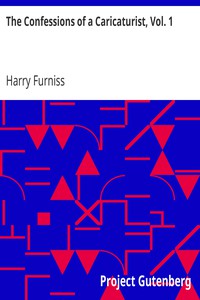
- Author: Harry Furniss
Book online «The Confessions of a Caricaturist, Vol. 1, Harry Furniss [digital book reader txt] 📗». Author Harry Furniss
[Pg 1]
CONFESSIONS OF A CARICATURIST.CHAPTER I. CONFESSIONS OF MY CHILDHOOD—AND AFTER.

Introductory—Birth and Parentage—The Cause of my remaining a Caricaturist—The Schoolboys' Punch—Infant Prodigies—As a Student—I Start in Life—Zozimus—The Sullivan Brothers—Pigott—The Forger—The Irish "Pathriot"—Wood Engraving—Tom Taylor—The Wild West—Judy—Behind the Scenes—Titiens—My First and Last Appearance in a Play—My Journey to London—My Companion—A Coincidence.
In offering the following pages to the public, I should like it to be known that no interviewer has extracted them from me by the thumbscrew of a morning call, nor have they been wheedled out of me by the caresses of those iron-maidens of literature, the publishers. For the most part they have been penned in odd half-hours as I sat in my easy-chair in the solitude of my studio, surrounded by the aroma of the post-prandial cigarette.
I would also at the outset warn those who may purchase this work in the expectation of finding therein the revelations of a caricaturist's Chamber of Horrors, that they will be disappointed. Some day I may be tempted to bring forth my skeletons from the seclusion of their cupboards and strip my mummies, taking [Pg 2] certain familiar figures and faces to pieces and exposing not only the jewels with which they were packed away, but all those spicy secrets too which are so relished by scandal-loving readers.
At present, however, I am in an altogether lighter and more genial vein. My confessions up to date are of a purely personal character, and like a literary Liliputian I am placing myself in the hand of that colossal Gulliver the Public.
I may, it is true, in the course of my remarks be led to retaliate to some extent upon those who have had the hardihood to assert that all caricaturists ought, in the interest of historical accuracy, to be shipped on board an unseaworthy craft and left in the middle of the Channel, for the crime of handing down to posterity distorted images of those now in the land of the living. This I feel bound to do in self-defence, as well as in the cause of truth, for to judge by the biographical sketches of myself which continually appear and reach me through the medium of a press-cutting agency, caricaturists as distorters of features are not so proficient as authors as distorters of facts.
I think it best therefore to begin by giving as briefly as possible an authentic outline of my early career.
For the benefit of anyone who may not feel particularly interested in such details, I should mention that the narration of this plain unvarnished tale extends from this line to page 29.
I was born in Ireland, in the town of Wexford, on March 26th, 1854. I do not, however, claim, to be an Irishman. My father was a typical Englishman, hailing from Yorkshire, and not in his appearance only, but in his tastes and sympathies, he was an unmistakable John Bull. By profession he was a civil engineer, and he migrated to Ireland some years before I was born, having been invited to throw some light upon that "benighted counthry" by designing and superintending the erection of gas works in various towns and cities.
My mother was Scotch. My great-great-grandfather was a captain in the Pretender's army at Culloden, and had a son, Angus, who settled in Aberdeen. When �neas MacKenzie, my grandfather, was born, his family moved south and settled [Pg 3] in Newcastle-on-Tyne. A local biographer writes of him: "A man who by dint of perseverance and self-denial acquired more learning than ninety-nine in a hundred ever got at a university—an accomplished and most trustworthy writer. The real founder of the Newcastle Mechanics' Institute, and the leader of the group of Philosophical Radicals who made not a little stir in the North of England at the beginning of the last century." 
 He was not only a benevolent, active member of society and an ardent politician (Joseph Cowen received his earliest impressions from him—and never forgot his indebtedness), but the able historian of Northumberland, Durham, and of Newcastle itself, a town in which he spent his life and his energies. If I possess any hereditary aptitude for journalism, it is to him I owe it; whilst to my mother, who at a time when miniature painting was fashionable, cultivated the natural artistic taste with much success, I am directly indebted for such artistic faculties as are innate in me.
He was not only a benevolent, active member of society and an ardent politician (Joseph Cowen received his earliest impressions from him—and never forgot his indebtedness), but the able historian of Northumberland, Durham, and of Newcastle itself, a town in which he spent his life and his energies. If I possess any hereditary aptitude for journalism, it is to him I owe it; whilst to my mother, who at a time when miniature painting was fashionable, cultivated the natural artistic taste with much success, I am directly indebted for such artistic faculties as are innate in me.
My family moved from Wexford to Dublin when I was ten. It is pleasant to know they left a good impression. In Miss Mary Banim's account of Ireland I find the following reference to these aliens in Wexford, which I must allow my egotism to transcribe: "Many are the kindly memories that remain in Wexford of this warm-hearted, gifted family, who are said not only to be endowed with rare talents, but, better still, with those qualities that endear people to those they meet in daily intercourse." The flattering adjectives with which the remarks about myself are sandwiched prevent my modest nature from quoting any more. However, as one does not remember much of that period of their life before they reach [Pg 4] their teens I need not apologise for quoting from the same work this reference to me at that age:
"One who was his playmate—he is still a young man—describes Mr. Furniss as very small of stature, full of animation and merriment, constantly amusing himself and his friends with clever[!] reproductions of each humorous character or scene that met his eye in the ever-fruitful gallery of living art—gay, grotesque, pathetic, even beautiful—that the streets and outlets of such a town as Wexford present to a quick eye and a ready pencil."
I can appreciate the fact that at that early age I had an eye for the "pathetic, and even beautiful," but, alas! I have been misunderstood from the day of my birth. I used to sit and study the heavens before I could walk, and my nurse, a wise and shrewd woman, predicted that I should become a great astronomer; but instead of the works of Herschel being put into my hands, I was satiated with the vilest comic toy books, and deluged with the frivolous nursery literature now happily a thing of the past. At odd times my old leaning towards serious reflection and ambition for high art come over me, but there is a fatality which dogs my footsteps and always at the critical moment ruins my hopes.
It is indeed strange how slight an incident may alter the whole course of one's life, as will be seen from the following instance, which I insert here although it took place some years after the period to which I am now alluding.
The scene was Antwerp, to which I was paying my first visit, and where I was, like all artists, very much impressed and delighted with the cathedral of the quaint old place. The afternoon was merging into evening as I entered the sacred building, and the broad amber rays of the setting sun glowed amid the stately pillars and deepened the shadowy glamour of the solemn aisles. As I gazed on the scene of grandeur I felt profoundly moved by the picturesque effect, and the following morning discovered me hard at work upon a most elaborate study of the beautiful carved figures upon the confessional boxes. I had just laid out my palette preparatory to painting that picture [Pg 5] which would of course make my name and fortune, when a hoarse and terribly British guffaw at my elbow startled me, and turning round I encountered some acquaintances to whom the scene seemed to afford considerable amusement. One of them was good enough to remark that to have come all the way to Antwerp to find a caricaturist painting the confessional boxes in the cathedral was certainly the funniest thing he had ever heard of, and thereupon insisted upon dragging me off to dine  MY FATHER with him, a proposition to which I immediately assented, feeling far more foolish than I could possibly have looked. I may add that as the sun that evening dipped beneath the western horizon, so vanished the visions of high art by which I had been inspired, and thus it is that Michael Angelo Vandyck Correggio Raphael Furniss lies buried in Antwerp Cathedral. Strangely enough I came across the following paragraph some years afterwards: "The guides of Antwerp Cathedral point out a grotesque in the wood carving of the choir which resembles almost exactly the head of Mr. Gladstone,
MY FATHER with him, a proposition to which I immediately assented, feeling far more foolish than I could possibly have looked. I may add that as the sun that evening dipped beneath the western horizon, so vanished the visions of high art by which I had been inspired, and thus it is that Michael Angelo Vandyck Correggio Raphael Furniss lies buried in Antwerp Cathedral. Strangely enough I came across the following paragraph some years afterwards: "The guides of Antwerp Cathedral point out a grotesque in the wood carving of the choir which resembles almost exactly the head of Mr. Gladstone,
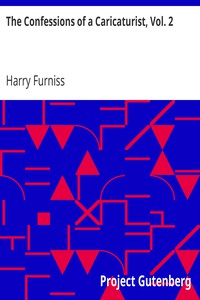

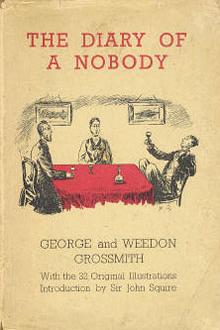
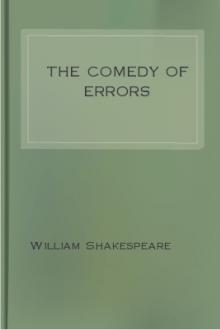
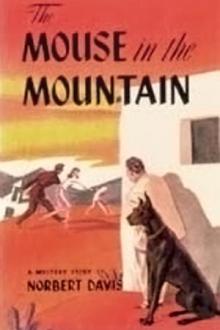
Comments (0)